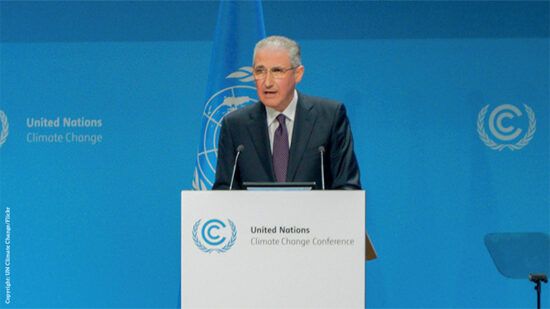Standard Chartered, KPMG and the United Nations Office for Disaster Risk Reduction (UNDRR) have called for huge advances in the mobilisation of finance for adaptation and resilience ahead of COP29, particularly in emerging markets.
The call to “drive the critical step-change” comes as the three organisations jointly launch the Guide for Adaptation and Resilience Finance – a roadmap designed to galvanise and align sector-wide efforts to address the significant finance shortfall in adaptation and reliance.
Developed with support from more than 20 leading financial institutions, Multilateral Development Banks (MDBs) and NGOs – including the African Development Bank and the UN Environment Programme Finance Initiative – the guide sets out a common reference for adaptation and resilience, alongside a list of financeable adaptation and resilience themes and activities, forming a classification framework.
Further, the guide aims to simplifying the decision-making process when financing adaptation and resilience through principles and guidance based on the latest best practice definitions and identifies priority investments along with their co-benefits. These include emissions reductions, nature protection and conservation.
David Greenall, global managing director of climate risk, decarbonisation and nature and adaptation at KPMG International, said: “Emerging markets and developing economies have a disproportionate risk of exposure to the negative effects of rising temperatures and extreme weather, and in many cases have fewer resources or less capacity to respond. We need capital to move in the right direction and to mainstream natural and climate hazard resilience into financial flows.
“Commercial banks and private investors have an opportunity to lead in meeting the adaptation challenge. I encourage the banking and investment community to use this guide as a key resource when considering how and where to invest more proactively and ambitiously in a resilient future.”
The cost of climate-related disasters
According to the latest UN analysis on global climate impacts, 2023 marked the hottest year on record amid rising sea levels and an increased frequency and intensity in extreme weather. Economic losses from natural and climate-related disasters were estimated to cost more than $330bn per year, with this figure considered “just the tip of the iceberg” of the real uncounted costs to people’s lives.
The Climate Policy Initiative said, at present, less than 10% of all climate finance is allocated to adaptation, with the financing gap continuing to widen. Current levels of funding remain well below the estimated $212bn per year needed through to 2030 in developing countries alone.
The guide, therefore, maps over 100 investable activities across adaptation and resilience, including: climate-resilient crops, vertical farming, natural flood protection, water conservation and efficiency measures, public hospital infrastructure investment, renewable energy storage solutions and mangrove conservation and replanting.
Research conducted by Standard Chartered, published in its Adaptation Economy Report, found that for every $1 spent on adaptation this decade, an economic benefit of $12 could be generated – highlighting the significant economic pay-off of early action towards adaptation and the potential gains for investors.
“Finance and investment for adaptation and resilience needs to rapidly scale to address a critical shortfall amid rising demand. We need to embed adaptation and resilience into financial decision-making, to ensure we understand and manage the financial risks and recognise the potential of adaptation and resilience as investable asset classes,” Marisa Drew, chief sustainability officer at Standard Chartered, said.
“The guide will help offer confidence to investors looking to allocate capital to adaptation and resilience projects, helping to advance sector-wide understanding and drive the critical step-change we need to see in capital mobilisation for this crucial area of sustainable finance.”








